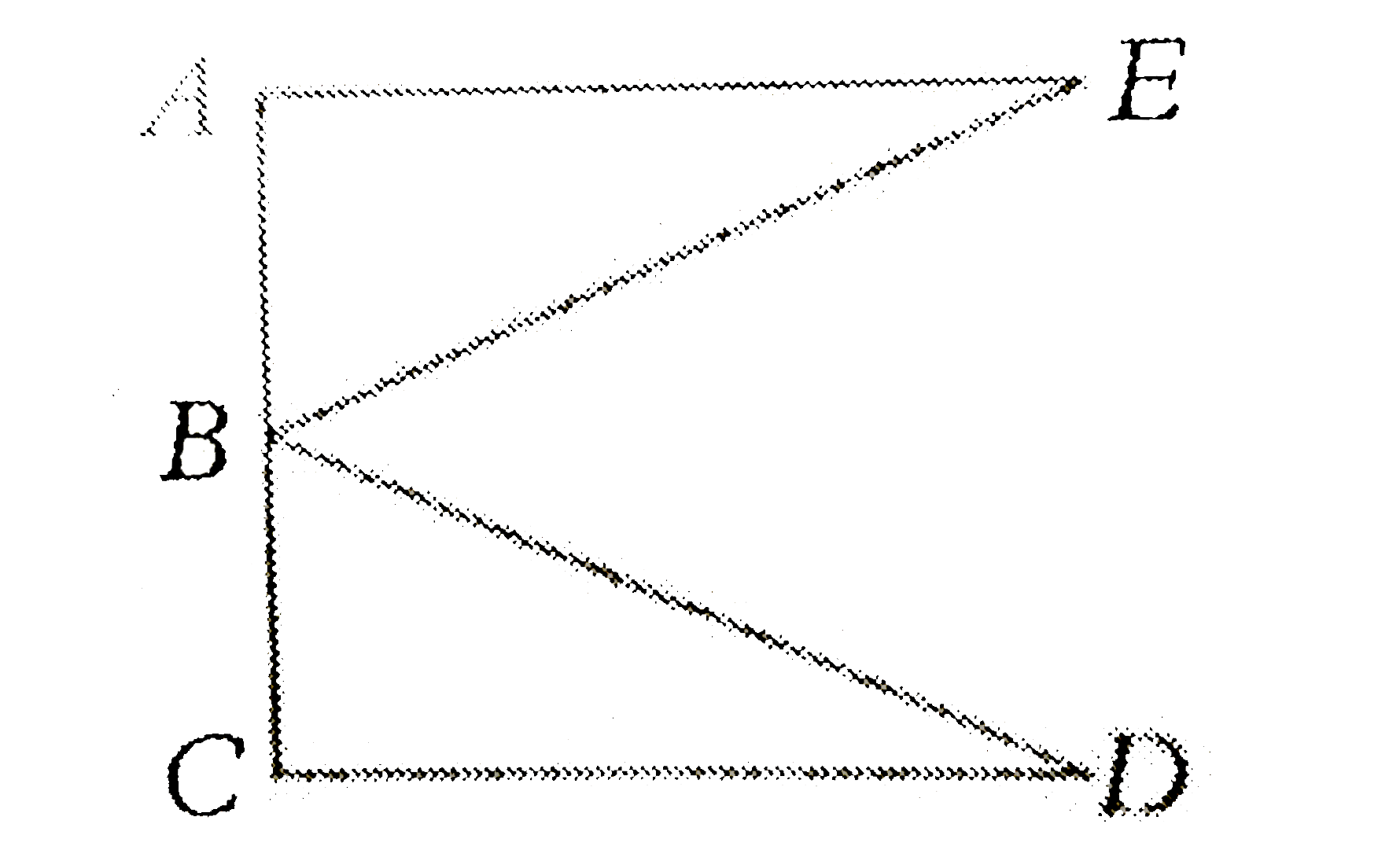ABCDE is a pentagon. If the sum of the vectors
¯¯¯¯¯¯AB,¯¯¯¯¯¯AE,¯¯¯¯¯¯BC,¯¯¯¯¯¯DC,¯¯¯¯¯¯ED,¯¯¯¯¯¯AC is λ¯¯¯¯¯¯AC then find the value of λ.Solution in Telugu
The correct Answer is:∴λ=3
Step by step video, text & image solution for ABCDE is a pentagon. If the sum of the vectors bar(AB),bar(AE), bar(BC), bar(DC), bar(ED), bar(AC) is lambda bar(AC) then find the value of lambda. by Maths experts to help you in doubts & scoring excellent marks in Class 11 exams.
Topper's Solved these Questions
- BOOK - VIKRAM PUBLICATION ( ANDHRA PUBLICATION)CHAPTER - ADDITION OF VECTORS EXERCISE - Exercise - 4 (b)11videos
ADDITION OF VECTORS
- BOOK - VIKRAM PUBLICATION ( ANDHRA PUBLICATION)CHAPTER - ADDITION OF VECTORS EXERCISE - Exercise - 4 (b)11videos
ADDITION OF VECTORS
- BOOK - VIKRAM PUBLICATION ( ANDHRA PUBLICATION)CHAPTER - APPLICATION OF DERIVATIVESEXERCISE - Exercise-10(h)35videos
APPLICATION OF DERIVATIVES
Similar Questions
Find the vector equation of the line passing through the point 2¯i+3¯j+¯k and parallel to the vector 4¯i−2¯j+3¯k
04:10View SolutionFind the vector equation of the line passing through the point 2¯i+3¯j+¯k and parallel to the vector 4¯i−2¯j+3¯k
03:36View SolutionFind the points of local extrema (if any) and local extrema of the following functions each of whose domain is shown against the function.
f(x)=x2,∀x∈R02:37View SolutionABCDE is a regular hexagon. i) If bar(AB) + bar(AE)+ bar(BC) + bar(DC) + bar(ED) + bar(AC)=lambdabar(AC) then lambda=
View Solution
In the given figure, ¯¯¯¯¯¯AE∣∣¯¯¯¯¯¯CD, AB=BC, and AE=CD. If ¯¯¯¯¯¯AC⊥¯¯¯¯¯¯CDand∠AEB=35∘, then find ∠DBE.03:48View SolutionIf ABCDE is a pentagon, then ¯¯¯¯¯¯AB+¯¯¯¯¯¯AE+¯¯¯¯¯¯BC+¯¯¯¯¯¯DC+¯¯¯¯¯¯ED=
01:35View SolutionIf ABCDE is a regular penatagon then :
¯¯¯¯¯¯AB+¯¯¯¯¯¯BC+¯¯¯¯¯¯AD+¯¯¯¯¯¯ED+¯¯¯¯¯¯AE=02:50View SolutionABCDE is a pentagon. If the sum of the vectors
¯¯¯¯¯¯AB,¯¯¯¯¯¯AE,¯¯¯¯¯¯BC,¯¯¯¯¯¯DC,¯¯¯¯¯¯ED,¯¯¯¯¯¯AC is λ¯¯¯¯¯¯AC then find the value of λ.02:52View SolutionABCD is a rhombus.If ¯¯¯¯¯¯AC=¯i+(1+λ)¯j+(λ−2)¯k and ¯¯¯¯¯¯BD=(1+λ)¯i+¯j−¯k then λ=
03:48View Solutionयदि निम्नलिखित सदिश ¯a,¯b तथा ¯c समतलीय हों, तो λ का मान ज्ञात कीजिए :
¯a=ˆi−ˆj+ˆk,¯b=2ˆi+ˆj−ˆk,¯c=λˆi−ˆj+λˆk.03:58View SolutionShow that the sum of the vectors represented by the sides bar(AB),bar(DC) of a quadrilateral ABCD as equivalent to the sum of the vectors represented by the diagonals bar(AC) and bar(DB) .
03:33View SolutionABCDE is a pentagon. If the sum of the vectors
¯¯¯¯¯¯AB,¯¯¯¯¯¯AE,¯¯¯¯¯¯BC,¯¯¯¯¯¯DC,¯¯¯¯¯¯ED,¯¯¯¯¯¯AC is λ¯¯¯¯¯¯AC then find the value of λ.02:31View SolutionABCD is a parallelogram If M and N are the midpoints of BC and DC respectively,If ¯¯¯¯¯¯¯AM+¯¯¯¯¯¯AN=λ(¯¯¯¯¯¯AC) then value of λ
07:08View SolutionIf ABCD is a parallelogram such that ¯¯¯¯¯¯AB=¯a,¯¯¯¯¯¯BC=¯b then ¯¯¯¯¯¯AC,¯¯¯¯¯¯BD are
03:35View SolutionABCDE is a pentagon then
¯¯¯¯¯¯AB+¯¯¯¯¯¯AE+¯¯¯¯¯¯BC+¯¯¯¯¯¯DC+¯¯¯¯¯¯ED+¯¯¯¯¯¯AC=02:49View Solution

